Woodrow Wilson (1856-1924), the twenty-eight President of the United States, served from 1913 to 1921.
Prior to his presidency
Wilson was a distinguished professor, lecturer, and author. He was appointed President of Princeton University in 1902. Wilson remains the only president to have an earned doctorate (he earned a Ph.D. in the History of Government from Johns Hopkins University in 1885) and still ranks as the recipient of the most honorary degrees (thirty-three).
After nine years as President of Princeton, Wilson served one term as a reform governor of New Jersey before securing the 1912 Democratic presidential nomination.
The Modern President
Along with Theodore Roosevelt, Wilson is one of two figures credited with the establishment of the modern presidency. Following his tenure, the president would not only be considered head of the political party but also as manager of the nation’s interests independent of the party and Congress. A survey of presidential leadership shows that Americans rank Woodrow Wilson among the top ten U.S. Presidents in terms of lasting impact.
In his first month in office, Wilson went before a joint session of Congress to present the legislative branch act on “the New Freedom,” his reform package. His entire reform package, including tariff, banking, labor and tax-related issues, passed in Congress by the end of his first year in office. He expanded the executive branch with the creation of the Federal Reserve, the Federal Trade Commission, and the Internal Revenue Service.
During Wilson’s eight years as president, Congress passed two constitutional amendments: prohibition (18th); and women’s suffrage (19th). Another amendment was ratified while Wilson was President: direct election of Senators (17th) on April 8th 1913. (The 16th amendment, which concerns income tax, was ratified in February 1913, after Wilson was elected but before he took office. The ratification was proclaimed by Taft’s Secretary of State, Philander Knox).
Wilson embraced and encouraged new technology. He opened the Panama Canal, started air mail service, endorsed the creation of an interstate highway system, appeared in one of the first filmed campaign advertisements, used a microphone for the amplification of his voice, and witnessed the birth of radio.
WWI:
When World War I started in Europe, Wilson’s primary goal was to maintain American neutrality and to help broker peace between the warring parties. While his isolationist policies succeeded at first, Wilson was forced to declare war on Germany after American ships in neutral waters were fired upon and sunk. He signed the Declaration of War in 1917, and led the nation from preparedness to victory in a mere eighteen months. In January 1918, Wilson issued his Fourteen Points for Peace.
Peace:
At the Paris peace conference in 1919, Wilson moved the seat of the presidency to Paris for six months while he commanded the attention of the world. He drew up terms of peace including his design for a League of Nations, a world body to settle future conflicts among nations. Wilson took direct personal control of American foreign policy, which he believed was constitutionally mandated. He personally attended meetings and negotiations and penned his approval of the Terms of Peace and the Covenant of the League of Nations. But Wilson’s biggest fight was yet to come.
Back in the United States, the Senate had reservations over the League, reservations that still echo today, about the U.S. losing sovereignty and becoming the “policeman of the globe.” They failed to ratify the treaty, despite two attempts and a cross-country trip by the president to bring his message directly before the American people. It was during this trip that Wilson fell ill, and soon after returning home he suffered a devastating stroke which left him politically and physically weakened. In mind and spirit he was still the President of the United States and he continued to govern from his sickbed with the assistance of his closest associates and Mrs. Wilson.
A world leader who sought peace, Wilson was awarded the Nobel Peace Prize as the Founder of the League of Nations, which became the foundation for the United Nations. He was a man who used the power of his office to bring about positive domestic reform and led the nation through the First World War with determined and principled leadership.
Post-Presidency:
Woodrow Wilson returned to private life at a house on S Street, NW, in Washington, D.C on March 4, 1921. Today, Woodrow Wilson House is a place where his powerful ideas remain and still inspire future generations. Woodrow Wilson House was the last home of Woodrow Wilson; his wife, Edith Bolling Wilson, gave the house to the National Trust for Historic Preservation in 1961.
The rich legacy of President Woodrow Wilson’s vision and ideals is preserved at Woodrow Wilson House. Its collections provide an opportunity for all Americans and visitors to the only presidential museum in Washington, D.C. to reflect on his life as educator, president, world statesman and peacemaker.
